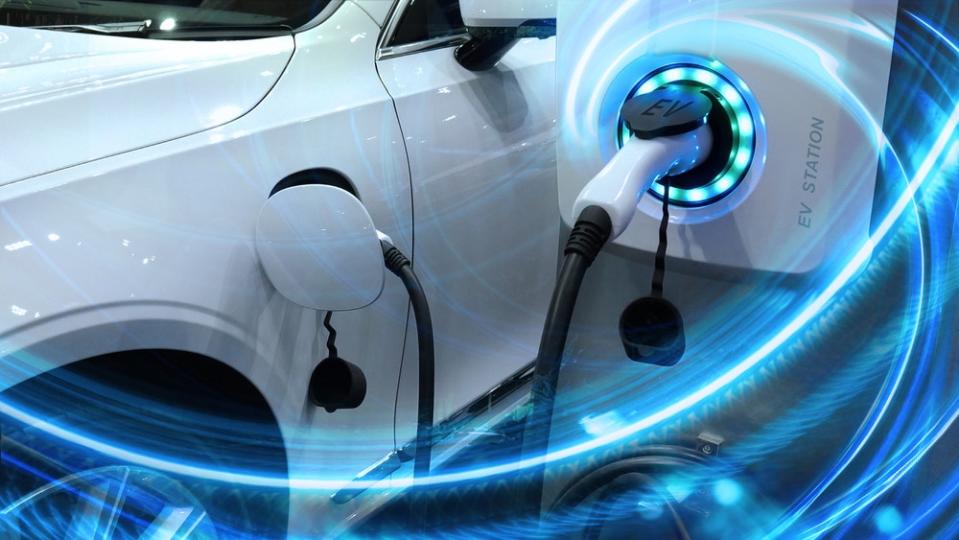Charging The South: The Rise Of The Battery Belt As The Epicenter For Electric Vehicle Power

The list of "belts" in the United States identifies portions of the country that share certain characteristics is seemingly endless. There's the Sun Belt, the Rust Belt, the Bible Belt, the Cotton Belt and the Corn Belt, among others.
And now, a new belt is making its way into the U.S. vernacular — the Battery Belt.
The Southeast has been an automotive manufacturing hub for decades. Auto assembly plants and production facilities proliferated there in the 1980s and have grown throughout the 2000s. And with the rising popularity of electric vehicles (EVs), it's earned a new moniker: The Battery Belt.
Since 2022, 77 EV projects totaling more than $80 billion in investments were announced in the U.S., and nearly half of them are concentrated in the Southeast, according to a report from Cushman & Wakefield.
Don't Miss:
Investing in real estate just got a whole lot simpler. This Jeff Bezos-backed startup will allow you to become a landlord in just 10 minutes, and you only need $100.
Passive income investments are one of the most trusted methods for riding out a recession, so it's no surprise that people are turning to high-yield real estate notes that pay a fixed 7.5% to 9%.
Among the characteristics that make the Southeast an attractive place for electric vehicle and battery production are:
Access to raw material: Lithium, which is required for rechargeable batteries is available locally, with Kings Mountain, North Carolina, having one of the largest deposits of the chemical element in the country.
Port connectivity: Booming seaports, particularly the Port of Savannah, benefit from the inland port network and transportation infrastructure throughout the Southeast, which helps with importing materials that aren't locally available.
Business-friendly environments: Many companies are attracted to Southeast states because they have right-to-work laws that hold labor costs down and reduce union influence.
Economic and workforce incentives: Companies looking to build manufacturing plants in the Southeast can take advantage of the tax incentives, grants and workforce training programs many states offer.
But the industry also faces headwinds. Gigafactories need skilled labor, and the workforce could fall short when the many plants in the planning stages begin hiring. Construction funding is another challenge because advanced technology and specialized equipment make gigafactories capital-intensive.
Infrastructure upgrades are often necessary to support the power requirements of battery plants, which are big energy users. The cities and towns the plants are located in also must be capable of supplying massive amounts of water to them.
"The rise of the EV industry in the Southeast presents multifaceted implications across the real estate landscape," the Cushman & Wakefield report states. "Addressing the specialized needs of battery-related facilities, anticipating infrastructure demands and envisioning future supply chain transformations are integral considerations for stakeholders looking to adapt to and capitalize on the dynamic environment.
Read Next:
Elon Musk has reportedly bought 6,000 acres of land just outside of Austin. Here’s how to invest in the city’s growth before he floods it with new tech workers.
Warren Buffett once said, "If you don't find a way to make money while you sleep, you will work until you die." Here are 3 high-yield investments to add significant income to your portfolio.
Collecting passive income from real estate just got a whole lot simpler. A new real estate fund backed by Jeff Bezos gives you instant access to a diversified portfolio of rental properties, and you only need $100 to get started.
"ACTIVE INVESTORS' SECRET WEAPON" Supercharge Your Stock Market Game with the #1 "news & everything else" trading tool: Benzinga Pro - Click here to start Your 14-Day Trial Now!
Get the latest stock analysis from Benzinga?
This article Charging The South: The Rise Of The Battery Belt As The Epicenter For Electric Vehicle Power originally appeared on Benzinga.com
© 2024 Benzinga.com. Benzinga does not provide investment advice. All rights reserved.
